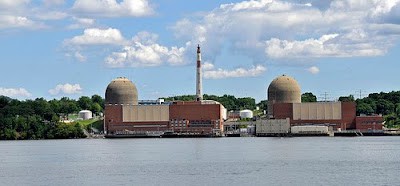Heartwarming News From New York Regarding Indian Point
I came across a great news story on timesunion.com about the controversy surrounding the Indian Point nuclear power station titled NY plant finds support at public meeting. There was a recent public meeting to discuss Entergy’s appeal of a ruling by the state Department of Environmental Conservation which denied Indian Point a water use permit that it needs to renew its federal licenses and continue operating into the 2030s.
Thirty of the first thirty-six speakers at the meeting spoke in favor of Entergy and in support of the continued operation of Indian Point.
Speakers representing carpenters, boilermakers and electrical workers unions spoke against the ruling, as did spokesmen for various business groups. Both worried about high energy costs scaring off businesses.
“This is the one issue where the business community and the unions are in absolute agreement,” said Al Samuels, president of the Rockland Business Association.
Many speakers seemed to assume that Indian Point would close if the DEC does not relent, although Entergy makes hundreds of millions a year in profits there and has not threatened to leave.
Representatives of the school district that Entergy’s taxes support, and a cultural organization that receives donations, testified glowingly to Administrative Law Judge Maria Villa about the company’s good works.
Peter Pockriss, spokesman for Historic Hudson Valley, which runs tourist sites in the area, said Entergy sets “the gold standard for corporate philanthropy.”
My “takeway” from the article is that the good guys are starting to speak up and recognize that they do not have to silently concede to the folks that want to shut down nuclear plants. Nuclear plant neighbors do not have to let fossil fuel suppliers sell more fuel at higher prices and accept the inevitable increases in air pollution that would accompany that market shift. They do not have to let state level politicians set a policy that goes against local interests while claiming to represent those interests.
Vernon, VT residents – are you watching what is happening in New York?
Update: (Posted on July 22, 2010 at 0218) NuclearStreet.com has reported that the city of New York has filed an amicus brief in support of the continued operation of Indian Point. New York City Calls For Indian Point Nuclear Power Station To Remain Open.
It is important to remember here that the current issue is a requirement by the state Department of Environmental Conservation for Entergy to spend a billion dollars to build two massive cooling towers, each as tall as 17 story buildings, on the plant site. You have all seen pictures of cooling towers; how would you like to see them added to this reasonably scenic plant site? If I lived near the plant, I would have to ask – how is it environmental conservation to add cooling towers to the site pictured below? Isn’t human environment at least as important as fish environment?

Update number 2: (Posted on July 22, 2010 at 0328) Here is a link to a WNYC.org article that includes a viewable copy of the amicus brief filed by the city. City Calls for Indian Point Nuclear Power Station to Stay Open.

Rod. This is good news! One of my blog posts has a cartoon about this issue. 70% of local people support IP, but the 30% who don’t support it make all the noise.
http://yesvy.blogspot.com/2010/07/psb-meeting-tomorrow-night-get-your.html
Thanks to G Murphy for the cartoon.
Apparently, NYC itself is supporting Indian Point and petitioning to intervene on the grounds that they already have extremely high electrical rates and if Indian Point closes, they’ll go higher, and further, carbon reduction targets won’t be able to be met.
Pleasant surprise, but it’s logical, Indian Point is NYC’s “oil”, one might say, seeing as the city is the only one in the country that is nearly totally dependent on electrified public transit, and is, therefore, one of the lowest-carbon urban areas in the country. (Personal note of family pride: My granddad worked for ConEd; he did enough of the engineering for the traction power grid in NYC from the 1920s to the 1960s that he could point out to my Dad where his work was when they were traveling into the city on a train; some of his work’s undoubtedly still in use. Unfortunately, he passed on in 1973, so I never got to know him.)
I wouldn’t call it over by a long shot, but the battle there is going retrograde for the antis.